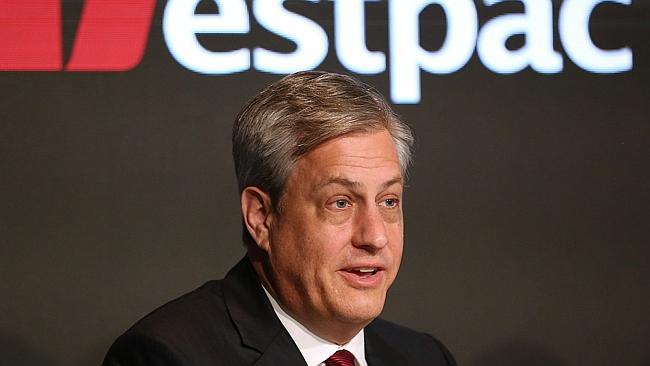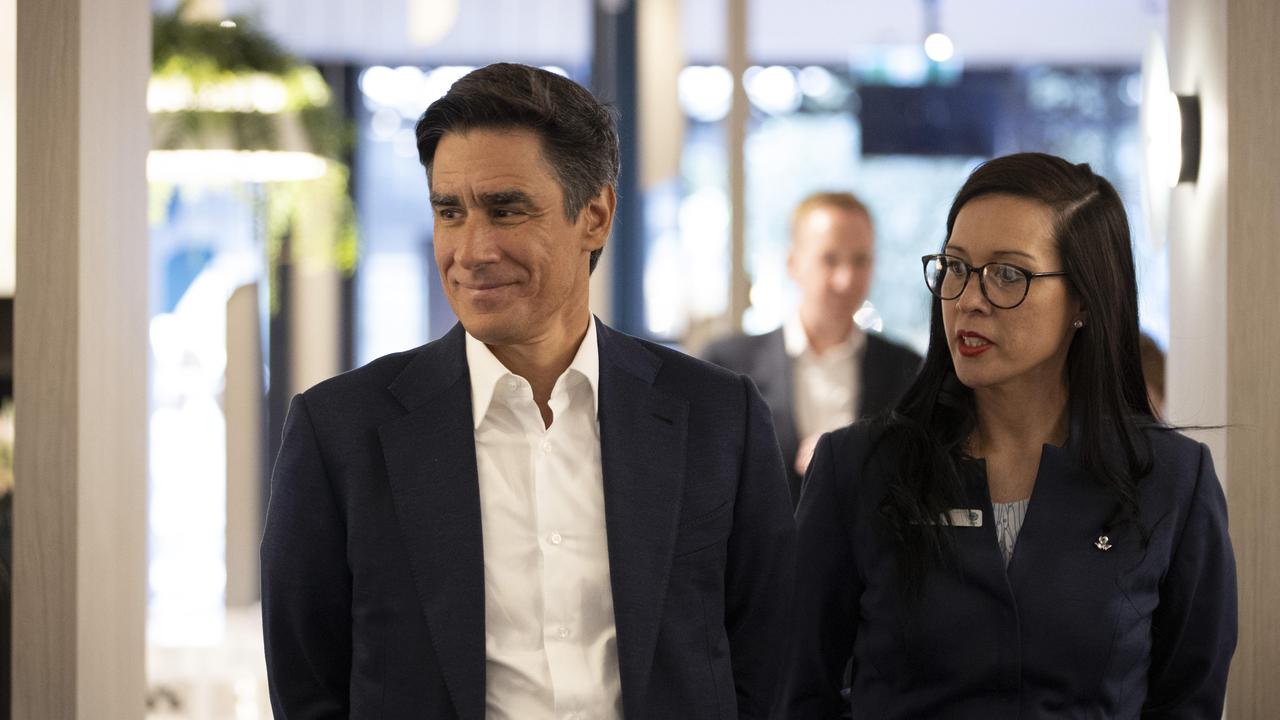Westpac cuts returns target, maintains dividend
Brian Hartzer has sliced Westpac’s return on equity target, telling investors to prepare for weaker profitability.

Westpac chief Brian Hartzer has caved in to rising pressures and sliced the bank’s return-on-equity target, telling shareholders to prepare for weaker profitability and potential dividend cuts if looming new industry regulations do not go their way.
As markets remain on high alert about a Donald Trump presidency, Mr Hartzer said global uncertainty was the biggest handbrake on Australia’s economy and that governments should give it a kick by taking advantage of cheap debt to invest in infrastructure.
“Where infrastructure projects are announced, business investment and particularly small business investment follows,” he said after reporting flat cash earnings.
Westpac’s results, combined with rivals, marked the first year of weaker profits from the big banks since the global financial crisis.
“With interest rates at historical lows, it makes sense for governments to borrow to fund transport and other infrastructure projects that boost the long-term productive capacity of the economy,” Mr Hartzer said.
Westpac’s cash profit came in flat on the prior year at $7.8 billion for the year to September 30, in line with expectations as its consumer arm offset lower earnings in wealth and institutional banking. The latest results round out the big four banks’ difficult earnings season, with their profits collectively falling 2.5 per cent to $29.6bn — the first decline since the global financial crisis.
Following ANZ’s dumping of its returns target last year, Mr Hartzer lowered his return-on-equity goal to 13-14 per cent — down from the 15 per cent “line in the sand” demanded by former chief Gail Kelly — as higher capital requirements, compliance costs and low interest rates made anything higher unrealistic.
Return on equity measures each dollar of profit generated from shareholders’ equity.
Mr Hartzer, however, stood by the use of targets despite concerns from regulators that they could push bankers to take on too much risk, arguing there was no conflict in generating a “reasonable” return on equity, serving customers and motivating staff.
“The 15 per cent target that we set four years ago was in a very different environment, well before a lot of the changes in capital, before the big falls in interest rates that we’ve had, and I think it was a sensible target at the time,” Mr Hartzer told The Australian.
“We just felt that it was realistic to say that for the medium term 13-14 per cent was a more realistic target,” Mr Hartzer said.
“Warren Buffet and Charlie Munger from Berkshire Hathaway like to point out that if you have a really terrible year it takes a long time to earn your way back into good performance, and we’d rather be known for delivering consistent performance that’s acceptable given the environment at the time.”
With lower returns already priced in for all banks, the market took the reality check in its stride and sent Westpac’s shares up 2.7 per cent to $30.50 as analysts backed Mr Hartzer’s pledge to keep cost growth between 2 per cent and 3 per cent and eventually reduce the cost-to-income ratio below 40 per cent.
Westpac also reported its lowest level of new impaired assets in 14 halves and defied doubters who had feared the dividend would be cut, holding the final payout flat at 94c despite the proportion of cash profit being paid out growing to 80 per cent. Westpac’s full-year dividend came in at $1.88 a share, up 1c on last year.
“I thought the result was OK without being spectacular,” said Mark Nathan, a fund manager at Arnhem Investment Management.
“It certainly allayed some of the fears about a dividend cut, although I suspect the discussions will return at the next result. They want to maintain their dividend but … will struggle to, especially in light of a lower return on equity target.
“But Westpac and all the banks are doing the correct thing of focusing on higher returning parts of their business and shedding lower-return institutional business.”
Mr Hartzer admitted the dividend payout ratio was “a little higher than we would consider is sustainable” and said in the longer term the board would assess dividends at each result.
He also dismissed speculation that the new return target of 13-14 per cent was implying that profitability was as good as it gets, even though returns slid to 14 per cent for the year due to the impact of the bank’s $3.5bn capital raising to meet stricter mortgage rules.
Chief financial officer Peter King argued Westpac was likely to be given enough “time” by regulators to respond to fresh standards early next year.
As rivals offload life insurance, Mr Hartzer vowed to retain the bank’s wealth operations, BT Financial, despite a 4 per cent slump in profits to $876m amid ongoing cost, capital and reputational problems.
Westpac’s other problem business of recent years, the institutional banking arm, suffered an 18 per cent decline in profit to $1.1bn amid higher impairments and lower margins.
Mr Hartzer argued that few banks globally could boast an institutional return on equity of 11.7 per cent and further cost reductions would help returns.
The consumer banking arm grew profits 14 per cent to $3bn, despite lower growth in the second half.



To join the conversation, please log in. Don't have an account? Register
Join the conversation, you are commenting as Logout